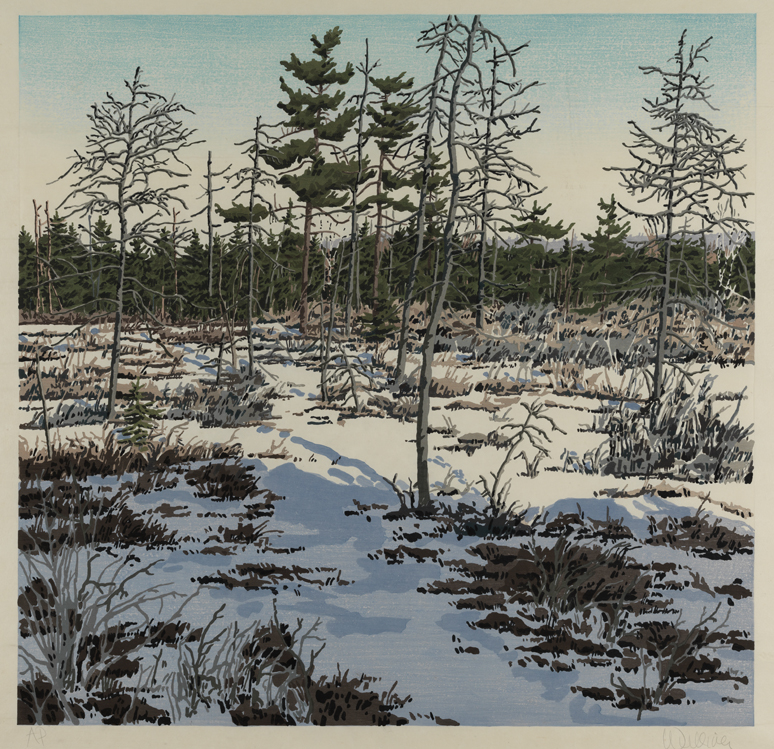
Cedar Breaks
Neil G. Welliver
Like his contemporary Philip Pearlstein, Neil Welliver made significant contributions to the reemergence of representational painting in the 1970s. Rarely panoramic, Welliver's paintings instead focus on intimate views of wooded scenes. His bold and articulate landscapes are derived from views of actual natural settings, but the manner of their depiction suggests a type of artifice one is likely to associate with a paint-by-numbers technique. Viewed closely, a Welliver painting appears as blobs of unmixed paint. But viewed from a short distance, the painting snaps into sharp focus. The push and pull between abstraction and representation is the cornerstone of Welliver's artistic method. While his style is rooted in the tradition of American landscape art, it is filtered through the color-theory ideas of his teacher and mentor at Yale University, Josef Albers, and the surface sensibilities of Jackson Pollock and the Abstract Expressionists.
Welliver grew up in the countryside of eastern Pennsylvania and earned a bachelor's degree from the Philadelphia Museum College of Art in 1953 (now University of the Arts), before heading off the Yale to study with Albers, where he received an M.F.A. in 1955. He taught painting at the University of Pennsylvania Graduate School of Fine Art for more than twenty years (1966-1989), commuting from his farmhouse in Maine. In Maine, he became part of a circle of outstanding realist painters that included Fairfield Porter, Alex Katz, Lois Dodd, Yvonne Jacquette, and Rackstraw Downes.
Artist
Date of Birth
(1929-2005)
Date
1976
Medium
Oil on canvas
Dimensions
96 x 96 in. (243.8 x 243.8 cm.)
Accession #
1976.14.2
Credit Line
Funds provided by the National Endowment for the Arts and the Charles E. Merrill Trust
Copyright
© artist or artist's estate
Category
Subject
More by Neil G. Welliver
We're so excited you're planning to visit PAFA!
Make time for art — visit us Thursday to Sunday.
Before reserving your tickets, please review helpful information about museum hours, accessibility, building access, and special admission programs.
If you have any questions, feel free to reach out to us at visitorservices@pafa.org — we’d love to help!



